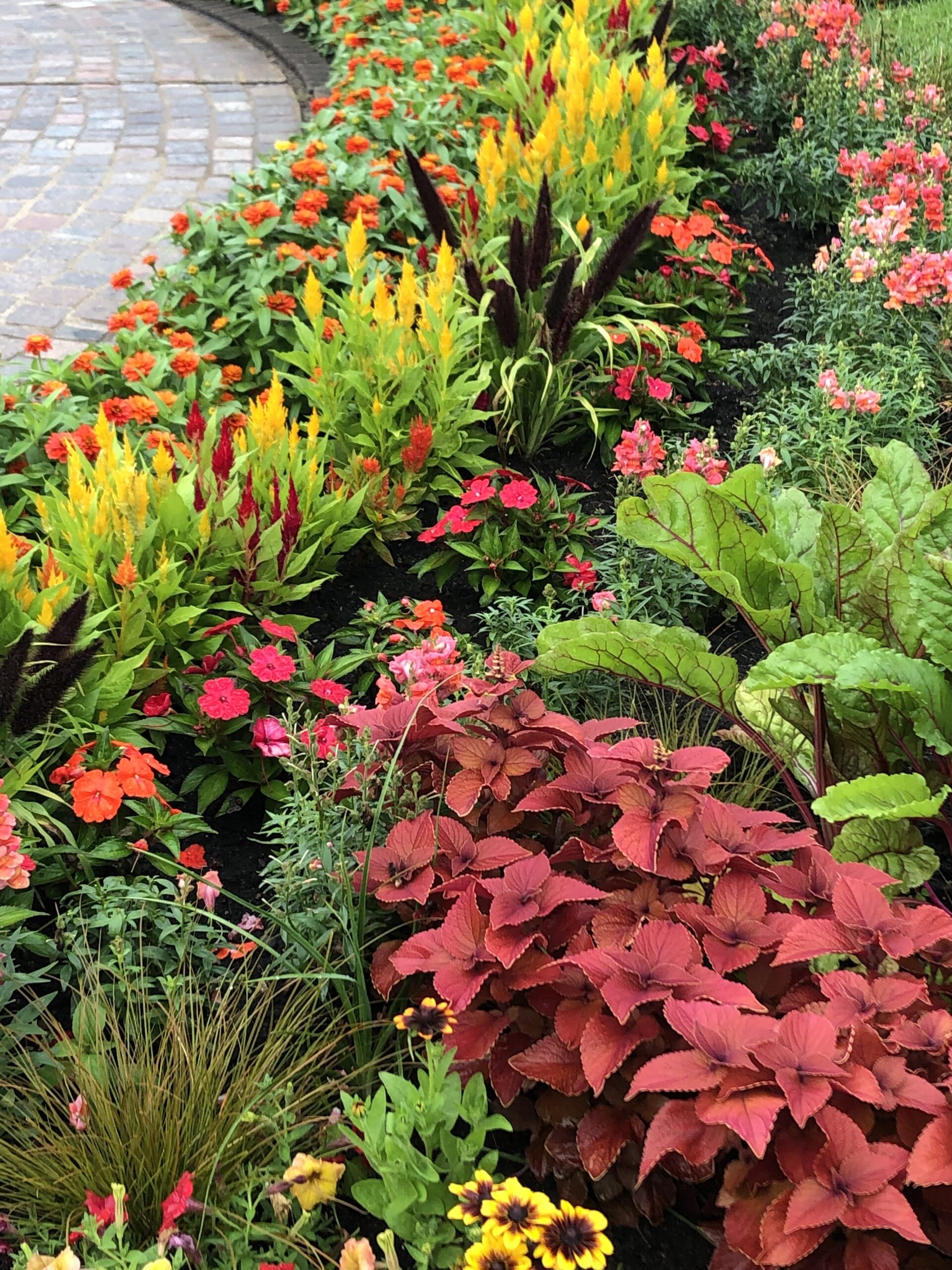Talking Plants
Jillian Patrie | University of Minnesota Yard and Garden Extension
Have your containers or garden plants started to look tired? Fertilizing may be the answer to perk up annuals and garden veggies. Many container grown flowers and veggies start to look a little sad come July and August. Providing plants with nutrients is essential to keeping flowers blooming and veggies producing until the first frost.
Why are containerized plants so hungry? Container plants have a small soil volume and nutrients are used quickly by growing vegetation. Containerized plants also tend to need frequent watering, which washes nutrients out of soil quicker. Potting mixes and some raised bed soils have a slow or continuous release fertilizer pre-added, but these are not always enough to keep plants healthy.
If a container mix already has fertilizer, that is an added bonus, however, fertilizing during watering is also usually also needed. Liquid fertilizer is the common way to add more nutrients for containerized annuals and veggies. It can be added into a watering can or applied through a hose attachment at the same time watering occurs. An excess of rain can wash nutrients out of container soil too, and fertilizer may need to be added after a series of heavy rainfall events. If containers need fertilizer, but not water, granular fertilizers can be added to the soil surface. Slow release or coated fertilizers are meant to be mixed into soil and often are not as effective when placed on the soil surface (save these for use at planting time).
What fertilizers should be used for annuals or veggie plants? An all-purpose fertilizer is just fine for most flowering annuals and/or veggies. If your plants are experiencing nutrient deficiency, then a more specific fertilizer may be needed. First the deficiency should be correctly identified before adding specialized fertilizers. In some cases, using specialized fertilizers can do more harm than good if they are not actually needed. Nitrogen deficiencies are most common in containerized settings as Nitrogen is a key nutrient, keeping plants looking green and lush. Other common plant nutrient deficiencies are Iron, magnesium, potassium and calcium. Not all these plant nutrients issues are due to lack of nutrients in the soil.
Blossom end rot is a calcium related issue but is more attributable to inconsistencies in soil moisture and temperature. Iron deficiencies in trees and shrubs in the Red River Valley are due to availability of iron at specific soil pH levels (the higher the pH the less available iron becomes).
Make sure to identify the issue before applying fertilizer, as again too much of a good thing can cause issues down the road. For more information on fertilizing garden vegetables visit https://extension.umn.edu/manage-soil-nutrients/quick-guide-fertilizing-plants and for more information on fertilizing and watering containerized plants visit https://extension.umn.edu/managing-soil-and-nutrients/fertilizing-and-watering-container-plants.
For questions about this article or local assistance please contact Clay County Extension Educator, Jill Patrie at 218-299-7338 or by email at patri350@umn.edu.


